Manchu-Collection
Early and Modern Prints and Manuscripts in Manchu Language at the Berlin State Library
With around 550 titles the Manchu collection of the Berlin State Library ranks among the large collections in the world. Its history goes back to the early beginnings of the library itself in the middle of the 17th century, when the Great Elector Friedrich Wilhelm von Brandenburg (1620-1688) opened his private library to scholars and guests. It is very likely that Andreas Müller (1630?-1694), the first curator of the Chinese collection that time, acquired the first Manchu titles for the library. The collection grew over the centuries with varying intensity, but still continuously. Renowned specialists for Manchu language, history and culture, like Heinrich Julius Klaproth (1783-1835), F(riedrich) W(ilhelm) K(arl) Müller (1863-1930), Paul Georg von Moellendorff (1847-1901), Erich Hauer (1878-1936), Walter Simon (1893-1981), Erich Haenisch (1880-1966), Sergeij Aleksandrovič Polevoj (1886-1971), and in the recent past Giovanni Stary (1946-), and Martin Gimm (1930-), contributed to its growth, and thus built a valuable collection.
Today, almost the entire old Manchu collection has been digitized. As a first step parts of the Berlin holdings were digitized between 2010 and 2014. This was done in the course of the digitization projects “SSG 6.25 Digital”, co-funded by the German Research Foundation (DFG). In the second step, and in order to virtually reconstruct the old East Asia Collection of the Prussian State Library, those segments of the collection which is a result of the Second World War are nowadays kept in Kraków (Poland), were digitized almost completely in 2013. The project was supported by a grant form the Commissary for Culture and Media (BKM) of the German Federal Government and took place in cooperation with the Biblioteka Jagiellonska in Kraków. The process of re-cataloguing is on the verge of completion. 406 Manchu items have already been made available online in the Digitized Collections of the Berlin State Library.
History
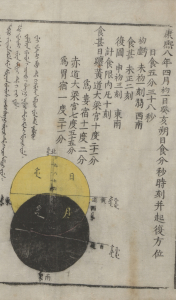
Elhe taifin i jakôci aniya duin biyai ice de. śun be jetere nirugan, Libri sin. 22-2
Already in times of Andreas Müller (1630?-1694), two items in Manchu language were to be found in the library’s collection, the first one being Ferdinand Verbiest’s (1623-1688) Prediction of the solar eclipse on 29th April 1669 (Typus eclipsis solis anno Christi 1669, Elhe taifin i jakôci aniya duin biyai ice de. śun be jetere nirugan = 康熙八年四月初一日癸亥朔日食圖 , Imperatoris Cam Hy octavo, die primo lunae 4ae, id est, die 29mo Aprilis ad Meridianum Pekinensem, Libri sin. 22-2), and the second item, a transcript of an imperial letters patent for the ancestors of Adam Schall of 1651, Diploma sinico-tartaricum pro J.A. Schalii parentibus et Majoribus, Ser.issimo et Pot.mo Electorri Brandenburgico …, apograph from Andreas Müller of July 19th 1683 (Ms. sin. 23 = Manchu version of Ms. sin. 22-1).
More than a century later Julius Klaproth (1783-1835) mentions further Manchurian books in his Verzeichniss der chinesischen und mandshuischen Bücher und Handschriften der Königlichen Bibliothek zu Berlin, Paris: Kgl. Druckerei 1822. He notices, that after Christian Mentzel’s death in 1702 the library’s Chinese collections didn’t grow. It was only in 1810 that he, Klaproth himself, sent some Chinese, Manchurian and Mongolian books to the library. And later on, he exchanged some of his duplicates with the library. In this way the library got a complete Manchurian reference collection, so that only the library in Paris was comparable to the Berlin collection.
Wilhelm Schott’s supplementary catalogue Verzeichniss der chinesischen und mandschu-tungusischen Bücher und Handschriften der Königlichen Bibliothek zu Berlin, Berlin: Kgl. Akademie der Wissenschaften 1840, mentions two Manchurian titles (in Schott’s words, „einige wenige“, p. III, p. 111, nr. XXXVII, the first five booklets of a translation of the New Testament, namely, the Gospels According to Mark and Luke, Paul’s Letters, the Apocalypse, and the Gospel According to Matthew into Manchu, Musei ejen Isus heristos i tutabuha ice hese, the translator is Stephan Lipovzov [1770-1841], Libri sin. 850, 859, 860, 863, 891, 892, unfortunately the items seem to were lost during World War II), as well as Tondo unenggi Fan gung ni wen ji bithe, Libri sin. 32 (today kept at Kraków), Schott p. 96, nr. IV.
Systematic acquisition started only in the early 20th century. In 1901, F(riedrich) W(ilhelm) K(arl) Müller (1863-1930), senior director at the then Museum of Ethnology, purchased books for the library in Peking, putting together the Müller collection (“Sammlung Müller”, shelf mark Slg. Müller). Shortly afterwards, the Peking collection (“Pekinger Sammlung”, shelf mark Pekinger Slg.) came into the library, at first as a depository of the wartime administration, incorporated into the library’s holdings since the end of 1909. Two years later, in 1911, the acquisition of the Moellendorff collection (“Sammlung Moellendorff”, shelf mark Slg. Moellendorff), i.e. the library of Paul Georg von Moellendorff [1848-1901] effected a important growth of the Manchu collection. Erich Hauer (1878-1936), associate professor for Manchu studies at the Berlin University, arranged the acquisition of further 18 missing titles, and in 1933 Walter Simon (1893-1981) in Peking again purchased Manchu titles for the then Royal Library. For that year Hermann Hülle (1870-1940) lists 1.227 volumes of printed books (Hülle, however, gives no number of titles), 37 manuscripts and 2 scrolls in the Manchu language.
In 1943, the Manchu Collection of the former Prussian State Library comprised about 2.650 volumes of around 150 printed books, 180 volumes of 38 Manchu manuscripts, and 3 scrolls. Unfortunately – just as in the case of the old Chinese collection – a substantial part of the pre-WWII Manchu holdings, which had to be relocated due to the war, was not returned to Berlin. One smaller part was returned to the Oriental Department of the former East Berlin Staatsbibliothek (since 1969: Asia-Africa-Department), another part to Marburg (former West Germany), and later to the East Asia Department of the Staatsbibliothek Preußischer Kulturbesitz in Berlin (West). These, altogether 114 titles, were rejoined in Berlin in the 1990ies. Today, about 100 titles of the old Manchu collection are housed in the Biblioteka Jagiellonska in Kraków, Poland. The remaining 15 titles are destroyed or must be considered lost.
Individual Collections
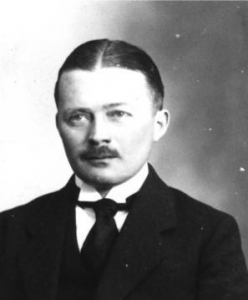
Erich Hauer
Erich Hauer (1878-1936) studied law in Berlin and Tübingen, and during his internship he attended the Chinese classes at Berlin University. Until 1917, Hauer worked as an interpreter at the German Embassy in Peking. Because of the breaking off of diplomatic relations by the Chinese side, Hauer returned to Germany. He studied Chinese, Manchu, and Mongolian with J.J.M. de Groot, Erich Haenisch, and F.W.K. Müller. From 1923 on, he taught Sinology in Berlin focussing mainly on Manchu and Mongolian. Hauer’s most important work is his „Handwörterbuch der Mandschusprache“ (Dictionary of the Manchu language, Wiesbaden and Tokio 1952–55).
Libri sin. and Libri sin. N.S.
Up to 1912, the Sinica and Manchurica in the East Asia Collection of the Royal and later, Prussian State Library were assigned the shelf marks Libri sin. After that, on the occasion of an incipient large-scope and systematical acquisition, the shelf marks were changed to Libri sin. N.S. (Neue Sammlung, i.e., new collection). Handwritten catalogues in book-form for parts of both of these segments do exist, albeit the entries are sometimes rather sketchy. They are available in digital format and can be accessed in the Digitized Collections of the Staatsbibliothek (a structured access is possible here). In each of these three handwritten catalogues in book-form, only titles marked with a red checkmark are available in Berlin, those marked with „K“ are located in Kraków, while the whereabouts of titles without mark is unknown. 33 titles in the Libri sin. segment are in Manchu. 21 of these are still existant, 16 in Berlin, and 5 in Kraków, 12 titles must be considered lost. In the Libri sin. N.S. segment 67 titles are in Manchu, 60 titles of these are in Berlin, 4 titles are in Kraków, 3 titles must be considered lost. The Manchu titles acquired for the library by Erich Hauer (1878-1936) and Walter Simon (1893-1981) in Peking were integrated into the Libri sin. N.S. segment.

Walter Simon
Walter Simon (1893-1981) studied Roman and Classical languages at the University of Berlin, and entered the Higher Library Service there in 1919. Since 1920, he studied Sinology under Otto Franke. His linguistic interests and skills extended also to Japanese, Tibetan, Manchu, and Mongolian. In 1932, he became professor for Sinolgy, and went to Peking, as Exchange Librarian with the National Library there, where he compiled the romanized index and the foreword to Li Teh-chi’s Union Catalogue of Manchu Books in the National Library of Peiping and the Library of the Palace Museum. Because of political and racial discrimination in 1936, he had to leave Germany, and emigrated to London. He taught Sinology at the School of Oriental and African Studies at the University of London from 1947-1960.
The Pander Collection

Danjur ging ni uheri ton (Pander C 32)
Eugen Pander (1854-1894[?]) was professor of National Economics at Tongwenguan 同文館 College in Peking since 1881. He was a collector of Lamaist books and works of art. The entire collection was acquired by the Ethnological Museum in Berlin and accessioned in 1889, but the books later passed into ownership of the Royal Library (Berlin). The collection was moved during the Second World War to Fürstenstein (today’s Ksiaz) and transferred from there to Grüssau (present-day Krzeszów). Today, the entire collection (except for three missing titles from part A) is preserved in Kraków. The Pander collection encompasses under C. 40 prints produced by Imperial command – containing, besides texts in Tibetan, Mongolian, and Chinese, also 12, partly in Manchu. These are excerpts from Buddhist texts, mainly the Manchu Kanjur, and the trilingual Dhāraṇī, like the Wacir giyolonggo geren ineku jihe fucihi unenggileme adislaha amba kulge iletu mutebure amba fulehe han i nomun (shelfmark Pander C 7), the Gan-j’i i maktacun tarni (shelfmark Pander C 10), and others.
The Moellendorf Collection
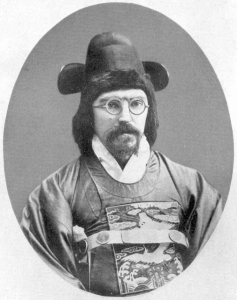
Paul Georg von Moellendorff (Source: Wikimedia Commons)
Paul Georg von Moellendorff (1847-1901) studied Law, Linguistics and Oriental Studies. In 1869, he accepted an offer to work under Sir Robert Hart in China’s Imperial Maritime Customs Service. Von Moellendorff stayed until 1874, when he entered the Consular Service of the German Foreign Office in China. In this capacity he was active in Canton, Peking, Tianjin and Shanghai. On the recommendation of Li Hongzhang 李鴻章 (1823-1901), he went to Korea in 1882, where he worked as Advisor to the Foreign Ministry and, a year later, became Vice-Minister. He stayed for three years, before, due to external circumstances, he returned to China and re-entered the Chinese Maritime Customs Service. Von Moellendorf died in 1901 in Ningbo.
The collection of von Moellendorff supposedly entered the Staatsbibliothek in 1911. In the course of the evacuations during the Second World War, the collection was moved to the three locations of Banz, Beuron und Fürstenstein. Today, 42 items of this collection are in Berlin, 39 are in Kraków. They mostly contain works on the Manchu language and literature, like multilingual manuals and dictionaries, as well as translations of Chinese works like canonical books into Manchu. Among them titles like the Fan i lei biyan bithe (翻譯類編), translations of two- to four-pronged Chinese phrases into Manchu (shelfmark Moellendorff 7), the Man han chuxue qingyu (滿漢初學清語), a Manchu-Chinese manuscript with a word collection for beginners (shelfmark Moellendorff 14), the Han i araha ubaliyambuha šajingga nomun (繙譯春秋), a translation of the Chunqiu into Manchu (shelfmark Moellendorff 41), a print from 1784.
The Peking Collection
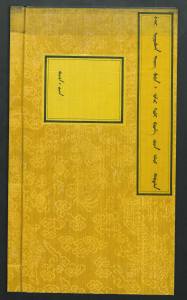
Hesei toktobuha Daitsing gurun i uhere kooli bithe (Pekinger Slg. 3)
In 1903, a shipment of 63 boxes with 84, partly very precious, prints and manuscripts in 1039 volumes (tao) arrived at the library. They were of Peking origin and mainly in Chinese. These titles obviously were books from the Imperial library, which came to Europe as a result of uncontrolled plunder in Peking during the Boxer Uprising in 1900. They came as a deposit of the Court Marshal’s Office, and were integrated into the library’s holdings in 1909. Five titles are in Manchu, among them a Palace manuscript of the Hesei toktobuha Daicing gurun i uheri kooli bithe ( 大清會典 ), „the Collective Administrative Statutes of the Great Qing Dynasty“ (shelfmark Pekinger Slg. 3) and a Palace manuscript of the Hesei toktobuha Daicing gurun i uheri kooli i baita hacin bithe (欽定大清會典事例), „the Collective Administrative Statutes and Precedents of the Great Qing Dynasty“ (shelfmark Pekinger Slg. 3a).
The Müller Collection
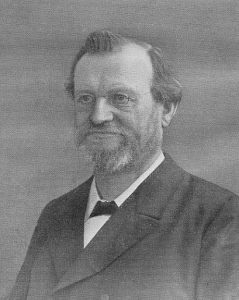
Friedrich Wilhelm Karl Müller (Source: Wikimedia Commons)
Friedrich Wilhelm Karl Müller (1863-1930) studied Theology, before he turned to Oriental and East Asian Cultures and Languages, especially the Arabic, Chinese, and Syrian languages. Between 1887 and 1928, Müller worked at the Ethnological Museum in Berlin, at first as research associate and since 1906, as Director of the East Asia Department. Müller made a name for himself when he deciphered the – mainly Middle Persian – manuscript fragments which had been recovered during the Prussian Turfan expeditions (1902-1914), and for his discovery of the Manichaean script among these texts.
The collection was gathered together in 1901 by Müller in Peking. In Kraków, there are today 205 items from the collection mainly in Chinese, and 32 titles in Manchu. These are primarily Manchu-Chinese dictionaries, manuals of technical terms, like the Ninggun jurgan i toktoho gisun i bithe (滿漢六部成語), a 1742 edition of a Chinese-Manchu manual of official technical terms used in the Six Ministries (shelfmark Slg. Müller 43), Manchu-Chinese phrasebooks, like the Manju gisun i oyonggo jorin i bithe (清文指要), a conversation text book with translations of Manchu sentences into Chinese in an edition from 1809 (shelfmark Slg. Müller 45-1 and Slg. Müller 45-2), translations of the four canonical texts, like the Han i araha ubaliyambuha duin bithe (御製繙譯四書), the Four Books translated into Manchu by imperial command (shelfmark Slg. Müller 49), moral tracts, like the Nadan tacihiyan be urunakô hôlabure bithe (七訓須讀), The seven exhortations to read in Manchu with translation into Chinese in an edition from 1764 (shelfmark Slg. Müller 51), as well as a collection of bundles of Chinese-Manchurian archival documents from the time of 1811 to 1861 (shelfmark Slg. Müller 84-1 – Slg. Müller 100).
The Polevoj Collection
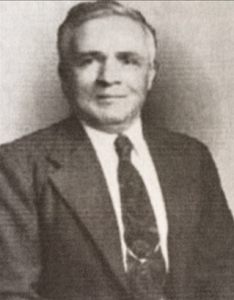
Sergeij Aleksandrovič Polevoj (1886-1971)
Sergeij Aleksandrovič Polevoj was born in Pirgatin, Ukraine. He studied Chinese, Manchu, Mongolian, Japanese and, Korean, at the Oriental Institute of Vladivostok. In 1913, he finished his diploma thesis on China’s press. He continued his studies in St. Petersburg, where he graduated with a master’s degree in 1915. Two years later, he worked as a teacher for Russian, first in Nanking and finally, in Peking until 1937, when he was arrested by the Japanese troups. In 1939, Polevoj was released from prison on the condition that he would leave China. Serge Elisséeff, Dean of the Faculty for East Asian Languages and Culture in Harvard, who had met him 1936 in Peking, invited Polevoj to come to the United States. Polevoj accepted the inivation, and teached in Harvard until 1956.
The Berlin State Library bought his collection of 133 items in the 1970s. It consists mainly of rare manuscripts in Chinese and the Manchu language, many of them syllabaries (like Hs. or. 8468) , glossaries (like Hs. or. 8386, a Chinese-Manchu Glossary of administrative terminology, or Hs. or. 8419, a Chinese-Manchu glossary of meteorological terminology), phraseologies (like the Nikan gisun kamciha Manjurara fiyelen i gisun Hs. or. 8400, Manchu-Chinese Dialogues Hs. or. 8448), and exercise texts, as well as official documents, like officiel letters of commanding banner officers, directories of official mails, Household Registers, name lists, and so on.
The Polevoj Collection’s shelfmarks are: Hs. or. 8383 – Hs.or. 8407, Hs. or. 8411 – Hs. or. 8475, Hs. or. 10774 – Hs. or. 10783, Hs. or. 10785 – Hs. or. 10817, and Hs. or. 10831
Traditional, and Numeric and Alphanumeric Shelfmarks

Erich Haenisch
Besides the Libri sin. and Libri N.S. group, there are further traditional and numeric shelfmarks, like 14 Hs. or. -, 55 numeric, as well as 120 alphanumeric shelfmarks.
A good portion of the items with numeric shelfmarks have their origin in the Haenisch collection, counting 4.500 volumes of Chinese and Manchurian books, and bought by the library in the 1960s. Erich Haenisch (1880-1966), who was born in Berlin, studied Chinese, Mongolian, and Manchu. Since 1913, he was private lecturer, since 1920, professor in Berlin, Göttingen, Leipzig, and München for Chinese, Mongolian, Manchu studies. His pioneering work was his translation of the Mongġol-un niġuča tobčiyan., the Secret History of the Mongols, into German He also published a Mandschu-Grammatik : mit Lesestücken und 23 Texttafeln, first published in 1961. Part of his collection are dictionaries like a manuscript of the Han i araha manju gisun i buleku bithe, a copy of the Manchu dictionary from 1708 (shelfmark 34907 ROA), and the Gargata manju gisun, a Manchu-Chinese dictionary structured according to subject groups, a print from 1891 (shelfmark 34908 ROA), as well as historical works, like the Ze j’i tung giyan g’ang mu ciyan biyan bithe, a translation of the 資治通鑒綱目 into Manchu, prepared by imperial order of 1691 (shelfmark 34944 ROA).
In 2011, the Berlin State Library acquired 102 items in Sibe-Manchu (shelfmark 5 A 194599 to 5 A 194691, 5 B 48400 to 5 B 48404, and Zsn 123634) from former professor Giovanni Stary (1946-) of Venice University (Italy), one of the foremost scholars of Manchu in the West. Stary has published the Manchu studies, an international bibliography in (so far) five volumes. The titles from his collection are mainly school books, as well as books on Sibe language and history, literature and culture.
In 2013, this Sibe collection was completed with 18 items (shelfmark 5 A 207945, 5 A 207947 to 5 A 207955, 5 A 194660 to 5 A 207966) acquired titles from the library of the Sinologist, Manchurist, and former professor for Chinese and Manchu studies at the University of Cologne (Germany), Martin Gimm (1930-), mainly works on Sibe language and literature, as well as politics.
Catalogues
::: Klaproth, Heinrich Julius: Verzeichniss [Verzeichnis] der chinesischen und mandshuischen Bücher und Handschriften der Königlichen Bibliothek zu Berlin. Paris 1822.
::: Schott, Wilhelm: Verzeichniss der chinesischen und mandschu-tungusischen Bücher und Handschriften der Königlichen Bibliothek zu Berlin: Eine Fortsetzung des im Jahre 1822 erschienenen Klaproth’schen Verzeichnisses. Berlin 1840.
::: Codices manuscripti et Libri Sinici = Alte Sammlung (1847-1913; contains shelfmark Libri sin. 1 to shelfmark Libri sin. 1603; only titles with a red tick are available in Berlin, those with a “K” in Kraków, Biblioteka Jagiellońska, the whereabouts of unmarked titles are unknown; in the left column references to entries in the catalogues Klaproth (K) and Schott (Sch) were noted).
::: Moellendorff, Paul Georg: Catalogue of Manchu Library, Shanghai : The American Presbyterian Mission Pr., 1905.
::: Katalog der Pekinger Sammlung (from 1911) / Hermann Hülle.
::: Libri sinici. Neue Sammlung (started in 1913) / [created by Hermann Hülle] (1913 to ca. 1933; contains shelfmark Libri sin. N.S. 1 to shelfmark Libri sin. N.S. 1650; titles with a red tick are available in Berlin, those with a “K” in Kraków, Biblioteka Jagiellońska, the whereabouts of unmarked titles are unknown).
::: Libri sinici. Neue Sammlung (1932 ff.) / [created by Hermann Hülle et al.] (contains shelfmark Libri sin. N.S. 1651 to shelfmark Libri sin. N.S. 2049 (holdings until ca. 1940; titles with a red tick are available in Berlin, those with a “K” in Kraków, Biblioteka Jagiellońska, the whereabouts of unmarked titles are unknown).
::: Fuchs, Walter: Chinesische und Mandjurische Handschriften und seltene Drucke. Nebst einer Standortliste der sonstigen Mandjurica. Reihe: VOHD, Bd. 12,1. Wiesbaden 1966. (contains beside others the holdings of the Berlin State Library).
::: Krempien, Rainer (ed.): Staatsbibliothek Preußischer Kulturbesitz. Katalog der Ostasienabteilung. Bd. 1-19. Osnabrück 1983-1986.
::: Walravens, Hartmut (ed): Mandschurische Handschriften und Drucke im Bestand der Staatsbibliothek zu Berlin. Reihe: VOHD, Bd. 12,8: Chinesische und manjurische Handschriften und seltene Drucke. Stuttgart 2014.
Further Sources
::: Seuberlich, Wolfgang: Übersicht über die Sammlung E. Haenisch, in Jahresbericht Staatsbibliothek Preußischer Kulturbesitz 12.1961/63, 127-128.
::: Walravens, Hartmut: The current situation of the Manchu collection of the Berlin State Library, in Proceedings of the 35th Permanent International Altaistic Conference, September 12-17, 1992, Taipei, 1994, 477-504.
::: Guan Dedong 关德栋, Deguo Bolin Guojia Tushuguan xiancun Manwenshu jianji 德国柏林国家图书馆现存满文书简记, in Manzu yanjiu 满族研究 1994(3), 49-53.
::: Der chinesische Roman Rou putuan in manjurischer Übersetzung der Berliner Handschrift aus der Zeit vor 1700. Eingeleitet von Lutz Bieg und Martin Gimm. Mit einem Vorwort herausgegeben von Hartmut Walravens, Berlin: Staatsbibliothek 2011, 47,497 S. (Neuerwerbungen der Ostasienabteilung. Sonderheft 27).